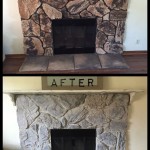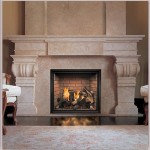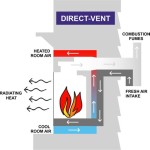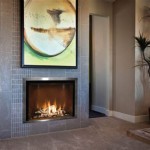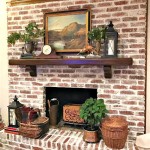Replacement Glass For Fireplace Doors: A Comprehensive Guide
Fireplaces offer warmth, ambiance, and a focal point in many homes. Over time, however, the glass doors that protect and enhance these features can become cracked, damaged, or simply less effective at containing heat and embers. Understanding the options and processes involved in replacing fireplace door glass is crucial for maintaining both the functionality and aesthetic appeal of a fireplace.
This article provides a comprehensive overview of replacement glass for fireplace doors, covering the types of glass available, factors to consider when selecting a replacement, the replacement process itself, and essential safety precautions. It aims to equip homeowners with the knowledge needed to make informed decisions regarding their fireplace glass replacement needs.
Understanding Fireplace Glass Types
Not all glass is suitable for fireplace doors. The high temperatures generated by a fire necessitate the use of specialized glass designed to withstand extreme heat. The three primary types of glass used in fireplace doors are:
1. Ceramic Glass: Ceramic glass, often referred to by brand names like Neoceram or Pyroceram, is the most common and widely recommended type of glass for fireplace doors. It is specifically engineered to withstand extremely high temperatures, typically up to 1300°F (700°C). Ceramic glass offers excellent thermal shock resistance, meaning it can handle rapid temperature changes without cracking or shattering. This makes it ideal for the intense and fluctuating heat conditions within a fireplace. Its superior heat resistance and durability justify its generally higher price point compared to other glass options.
2. Tempered Glass: Tempered glass is a type of safety glass that has been heat-treated to increase its strength and resistance to breakage. While stronger than standard annealed glass, tempered glass is not suitable for direct exposure to the intense heat of a fireplace flame. It is designed to shatter into small, relatively harmless pieces if broken, rather than sharp shards, making it safer than standard glass. Tempered glass is often used in fireplace door frames or as a component in more enclosed fireplace designs where it is not directly exposed to the fire. Its maximum temperature resistance is significantly lower than ceramic glass, typically around 400-500°F (204-260°C).
3. Wire Mesh Glass: Wire mesh glass is created by embedding a wire mesh within the glass during the manufacturing process. This reinforces the glass and helps to hold it together even if it cracks. While the wire mesh adds strength, it does not significantly increase the glass's heat resistance. Like tempered glass, wire mesh glass is generally not suitable for direct exposure to the high temperatures of a fireplace flame. It is more commonly used in industrial settings or for fire-rated doors in non-residential applications. Its primary advantage is its ability to maintain structural integrity even when broken, providing a barrier against fire spread.
Factors To Consider When Selecting Replacement Glass
Choosing the right replacement glass for a fireplace door involves considering several factors beyond just the type of glass. These factors include:
1. Dimensions and Shape: Accurate measurements are critical to ensure a proper fit. Measure the existing glass carefully, noting the length, width, and thickness. If the glass is an irregular shape, create a template or take precise measurements of each side and angle. Incorrect dimensions can lead to gaps, air leaks, and inefficient heat retention. Most glass suppliers can cut glass to custom sizes and shapes based on provided measurements or templates. Double-checking measurements before ordering is crucial to avoid costly errors.
2. Thickness: The thickness of the glass contributes to its strength and heat resistance. Ceramic glass for fireplace doors typically ranges from 3/16 inch to 1/4 inch thick. Using glass that is too thin can compromise its structural integrity and increase the risk of cracking or shattering under high heat. Consult the fireplace manufacturer's specifications or an experienced glass professional to determine the appropriate thickness for a specific fireplace model.
3. Clarity and Tint: While the primary function of fireplace glass is heat resistance and safety, its clarity and tint also affect the aesthetic appeal of the fireplace. Clear glass provides an unobstructed view of the fire, while tinted glass can reduce glare and add a decorative element. Consider the desired aesthetic and the overall design of the fireplace when selecting the glass clarity and tint. Keep in mind that tinted glass may slightly reduce the amount of heat radiated from the fireplace.
4. Gasket Material: The gasket is the heat-resistant seal that surrounds the glass, creating an airtight barrier between the glass and the door frame. Replacing the gasket whenever the glass is replaced is essential for maintaining the fireplace's efficiency and preventing air leaks. Gaskets come in various materials, including fiberglass, ceramic fiber, and high-temperature silicone. Choose a gasket material that is compatible with the type of glass and the fireplace's operating temperature. Ensure the gasket is properly installed to create a tight seal.
5. Compliance with Safety Standards: Ensure that the replacement glass and gasket material meet relevant safety standards and certifications. Look for products that are tested and certified by recognized organizations, such as UL (Underwriters Laboratories) or ANSI (American National Standards Institute). Compliance with safety standards ensures that the materials meet minimum requirements for heat resistance, durability, and fire safety.
The Fireplace Glass Replacement Process
Replacing fireplace glass is a task that can be undertaken by a homeowner with reasonable DIY skills. However, safety is paramount, and if there is any doubt about the ability to perform the replacement correctly, a professional should be consulted. The general steps involved in the replacement process are:
1. Preparation: Allow the fireplace to cool completely before starting the replacement process. Gather necessary tools and materials, including a screwdriver, pliers, putty knife, new glass, new gasket, and safety glasses. Protect the surrounding area with drop cloths or newspapers to prevent damage from debris or adhesive.
2. Removing the Old Glass: Carefully remove the fireplace door from the fireplace. Place the door on a flat, stable surface. Use a screwdriver or pliers to remove any screws or retaining clips that secure the glass in place. Gently remove the old glass from the door frame. Be cautious when handling broken glass, and dispose of it properly. Scrape away any remaining gasket material or adhesive from the door frame using a putty knife.
3. Installing the New Gasket: Apply the new gasket material around the perimeter of the door frame where the glass will sit. Ensure the gasket is properly aligned and securely attached. Some gaskets have adhesive backing, while others may require a high-temperature adhesive. Follow the manufacturer's instructions for installing the gasket.
4. Installing the New Glass: Carefully place the new glass into the door frame, ensuring it is centered and properly seated against the gasket. Secure the glass in place with screws or retaining clips, tightening them evenly to avoid putting undue stress on the glass. Do not overtighten the screws, as this can cause the glass to crack or break.
5. Reinstalling the Door: Once the glass is securely installed, reinstall the fireplace door onto the fireplace. Ensure the door is properly aligned and securely attached. Inspect the door to ensure it opens and closes smoothly and that there are no gaps or air leaks around the glass.
Safety Precautions
Safety should be the top priority when replacing fireplace glass. Failure to follow safety precautions can result in injury or damage. Observe the following guidelines:
1. Wear Safety Glasses and Gloves: Always wear safety glasses and gloves when handling glass to protect your eyes and hands from sharp edges and debris.
2. Allow the Fireplace to Cool Completely: Never attempt to replace fireplace glass while the fireplace is hot. Allow the fireplace to cool completely before starting the replacement process to avoid burns. Residual heat can also weaken the glass, making it more prone to breakage during handling.
3. Handle Glass Carefully: Glass can be sharp and fragile. Handle it with care to avoid cuts and breakage. Support the glass properly when carrying it to prevent it from bending or flexing.
4. Dispose of Broken Glass Properly: Dispose of broken glass safely to prevent injuries. Wrap the broken glass in newspaper or cardboard and label it clearly before placing it in a trash receptacle. Check local regulations for specific guidelines on disposing of broken glass.
5. Use Appropriate Tools: Use the appropriate tools for the job to avoid damaging the glass or the fireplace door. Do not use excessive force when removing or installing screws or retaining clips. If a screw is stuck, use a penetrating oil or heat to loosen it before attempting to remove it.
6. Test the Fireplace Before Use: After replacing the glass, test the fireplace before using it to ensure the glass is properly installed and the door seals correctly. Start a small fire and observe the glass for any signs of cracking or stress. If any issues are observed, extinguish the fire immediately and consult a professional.
7. Consult a Professional When Needed: If you are unsure about any aspect of the replacement process or if you encounter any difficulties, consult a qualified fireplace technician or glass professional. Attempting to perform the replacement without proper knowledge or skills can lead to injury or damage.
By understanding the different types of fireplace glass, considering the key factors when selecting a replacement, and following the proper replacement process and safety precautions, homeowners can effectively replace their fireplace door glass and maintain the safety, efficiency, and aesthetic appeal of their fireplace.

Standard Size Masonry Fireplace Doors Fixed Frame

Fireplace Glass Doors Vs Screens Full Service Chimney

Prefab Fireplace Doors Large Selection Affordable

Premier View Masonry Fireplace Door Woodland Direct

Fireplace Replacement Glass For Prefab Doors Parts

Fireplace Glass Doors Vs Screens Full Service Chimney

Glass Fireplace Doors Replacement Guaranteed Fit Brick Anew

Pleasant Hearth Arrington Fireplace Door Doors
Everything You Need To Know About Fireplace Glass Door Replacement Demers

Nightwell Replacement Fireplace Door For Prefab Fireplaces
Related Posts


